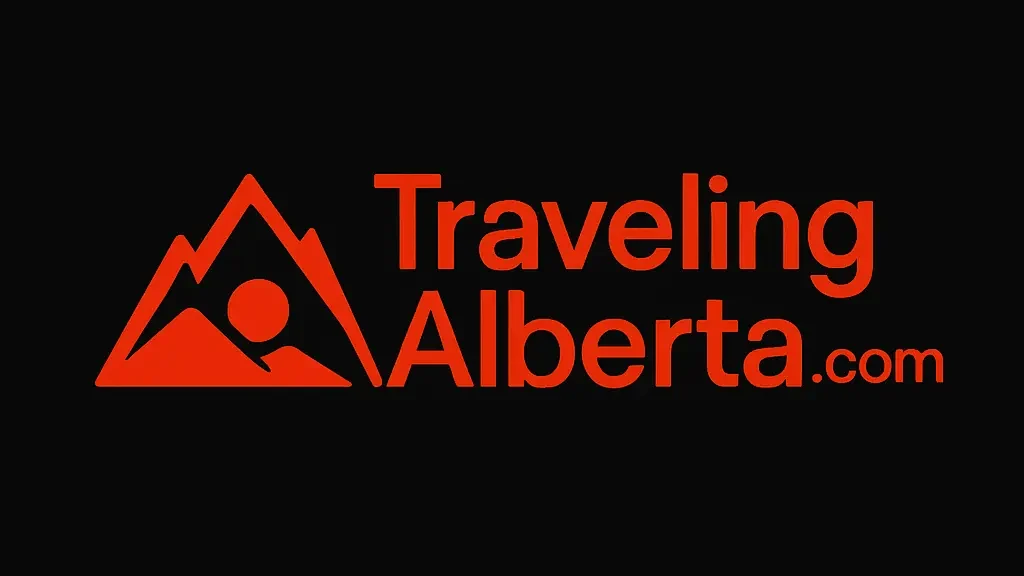Set deep in the heart of the Canadian Rockies, Jasper National Park Alberta is a spectacular natural wonder. Covering more than 11,000 square kilometers, it’s the largest national park in the Canadian Rockies and forms part of a UNESCO World Heritage Site shared with neighboring parks like Banff and Yoho.
This stunning wilderness offers breathtaking mountain views, shimmering lakes, massive glaciers, dense forests, and abundant wildlife. Whether you’re planning your first visit or returning to discover more hidden gems, this guide covers everything you need to know about Jasper National Park Alberta — from attractions and hikes to wildlife, the best times to visit, and insider tips.
Why Jasper National Park Alberta Should Be on Your Bucket List
- Unlike Banff, Jasper offers a quieter, wilder experience of the Canadian Rockies. Here’s why it stands out:
- Dramatic landscapes — Jasper’s scenery includes towering peaks, crystal-clear rivers, deep canyons, and ancient icefields.
- Abundant wildlife — Jasper is one of the best places in Canada to spot elk, bears, mountain goats, and more.
- Outdoor adventure for all — From beginner-friendly trails to challenging summits, paddling, skiing, or scenic drives, there’s something for every traveler.
- World-class stargazing — Jasper is designated a Dark Sky Preserve, making it ideal for spotting the Milky Way and northern lights.
Top Attractions in Jasper National Park Alberta
Maligne Lake and Spirit Island
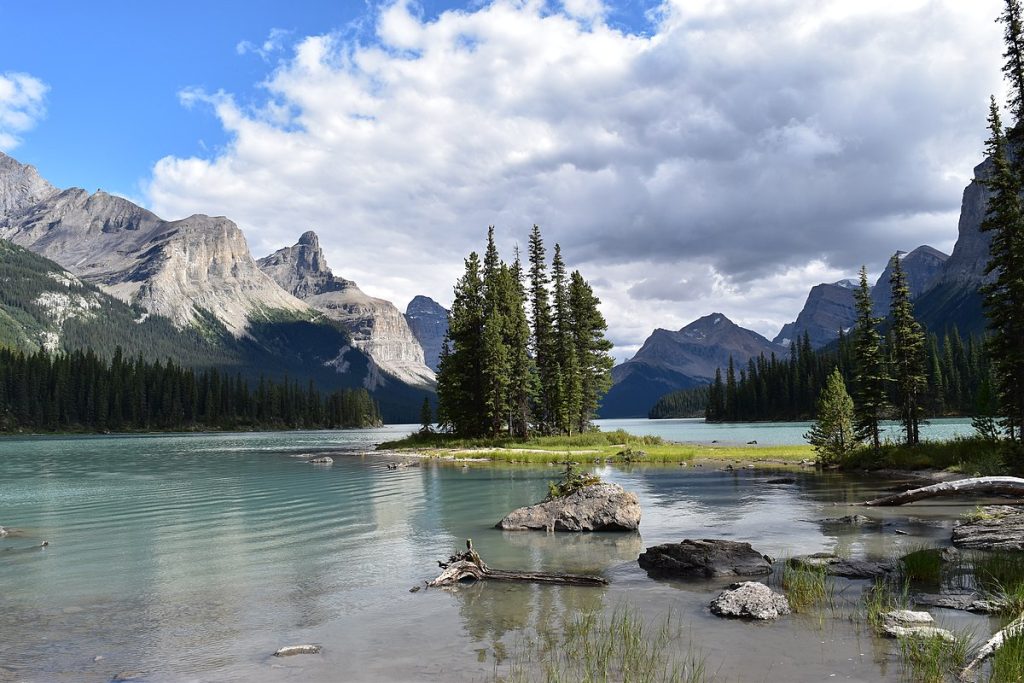
No visit to Jasper is complete without seeing Maligne Lake, the largest natural lake in the Canadian Rockies. Famous for its vivid turquoise color and backdrop of rugged mountains, the lake is a photographer’s dream.
At the heart of Maligne Lake lies Spirit Island, one of the most iconic scenes in Canada. You can:
- Take a boat cruise (90 mins to 2 hours) to Spirit Island
- Paddle by kayak or canoe for a more immersive experience
- Hike the Mary Schäffer Loop for lakeside views without getting on the water
Athabasca Falls
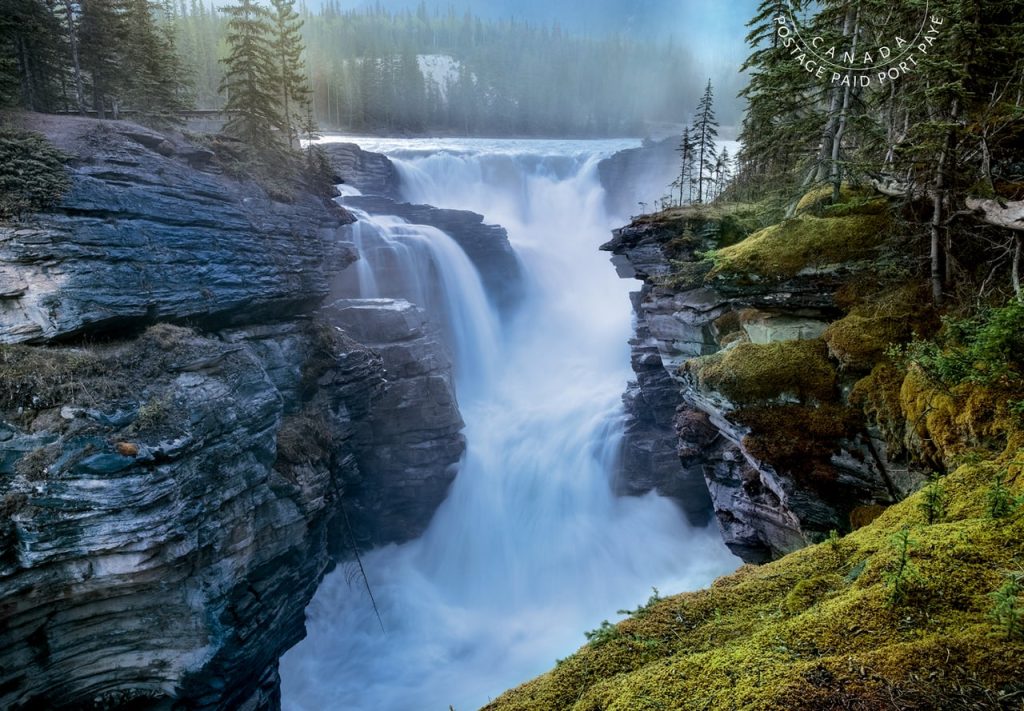
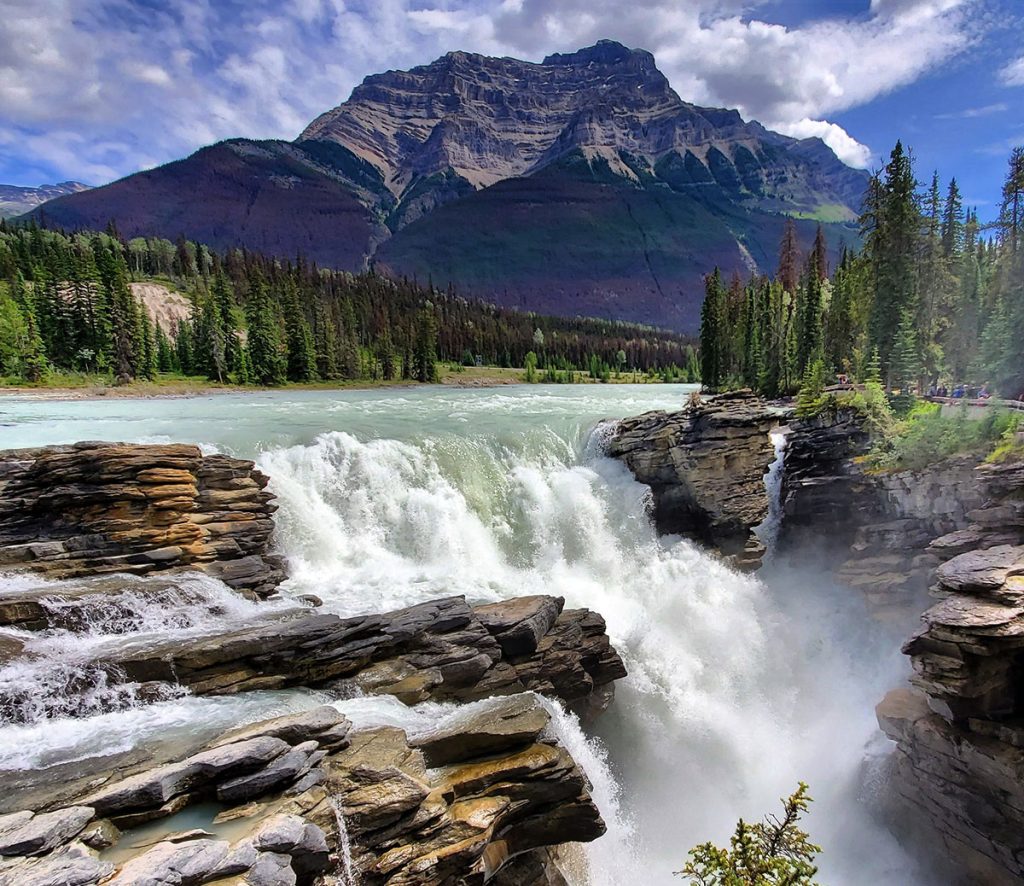
Just off the Icefields Parkway, Athabasca Falls is a thundering force of nature. Though not Jasper’s tallest waterfall, its power as it carves through hard quartzite rock is unforgettable.
- Follow the well-maintained trails and viewing platforms to safely see the falls and the dramatic gorge below.
- Visit early in the morning or late afternoon for the best light and fewer crowds.
Columbia Icefield and Athabasca Glacier
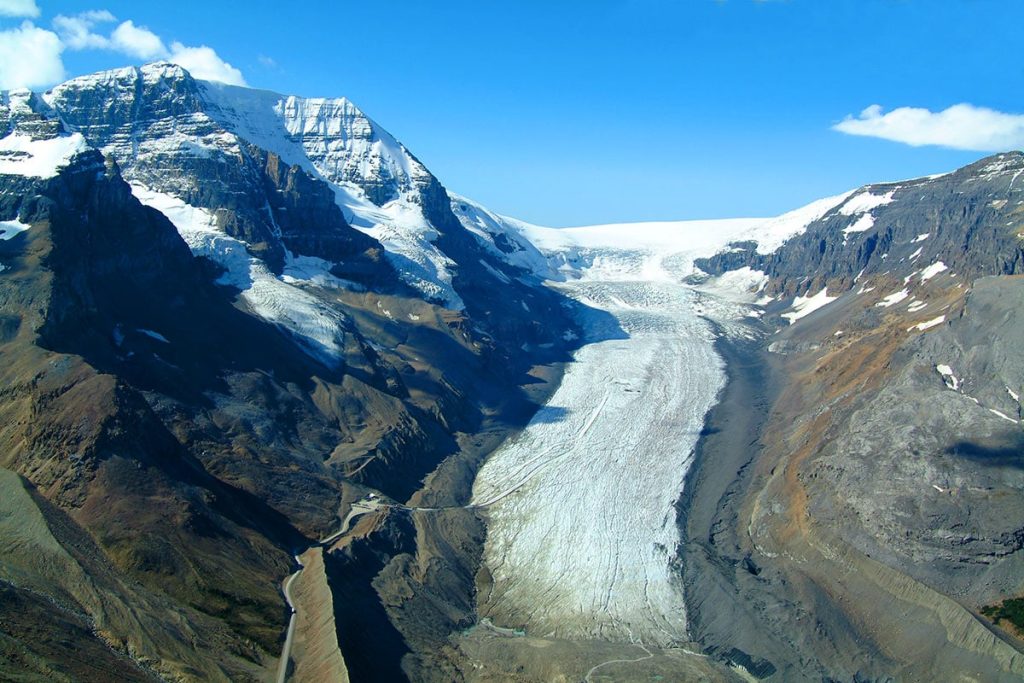
The Columbia Icefield is one of the most accessible icefields in North America and a living remnant of the last Ice Age.
- Join an Ice Explorer tour to ride onto the Athabasca Glacier and stand on ancient ice.
- Test your nerve on the Glacier Skywalk, a glass-floored platform suspended 280 meters above the valley.
- Hike to the glacier toe on a self-guided trail (1.4 km return) for an up-close view of this natural wonder.
Jasper SkyTram
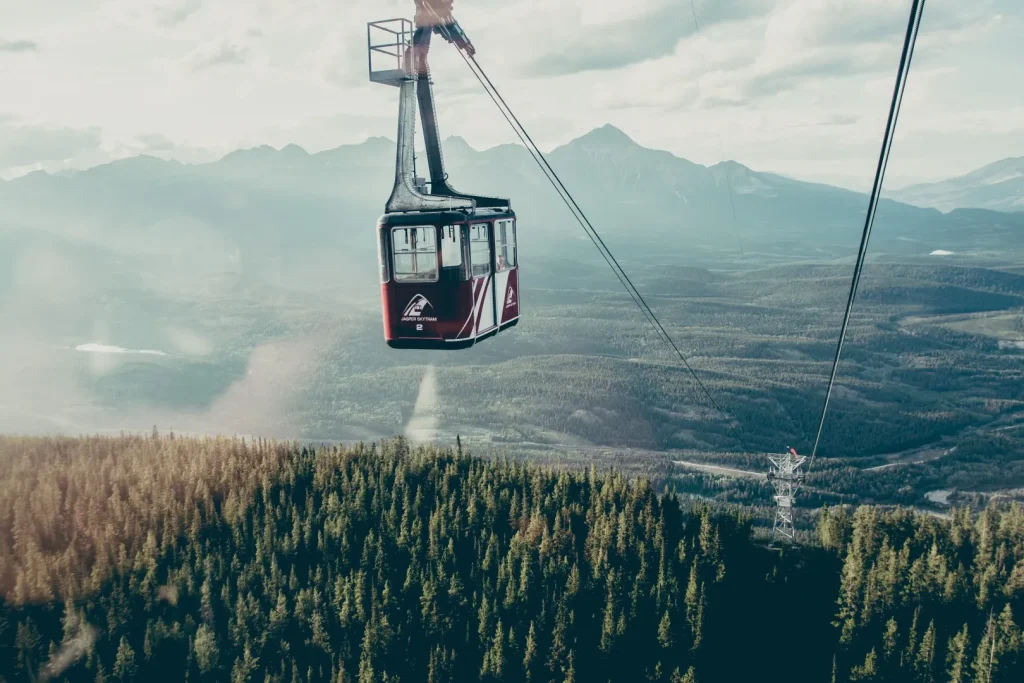
The Jasper SkyTram is the highest and longest aerial tramway in Canada. It lifts you to an elevation of 2,263 meters on Whistlers Mountain.
- Once at the top, hike to the summit (a short but steep 1.2 km trail) for a 360-degree view of six mountain ranges, glaciers, and Jasper town far below.
- In autumn or on clear nights, it’s an incredible stargazing spot.
Miette Hot Springs
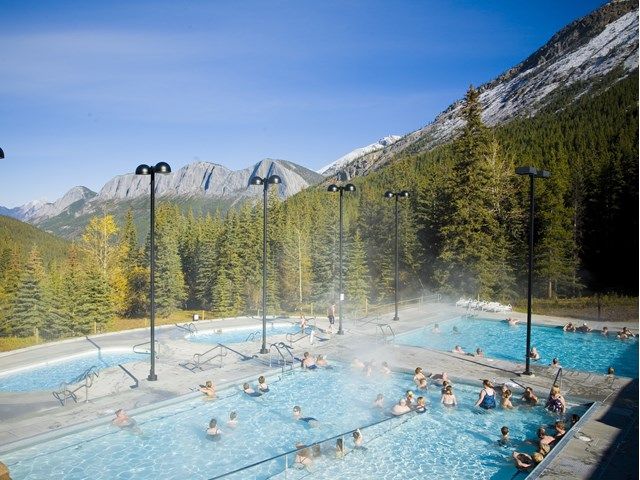
The Miette Hot Springs are the hottest mineral springs in the Canadian Rockies. Surrounded by mountains, the pools are the perfect way to unwind after a hike.
- Water temperatures average 40°C (104°F).
- Facilities include lockers, a café, and nearby picnic spots.
Best Hikes in Jasper National Park Alberta
Jasper is a hiker’s paradise with trails for every level. Here are some highlights:
Valley of the Five Lakes (4.5 km loop, moderate)
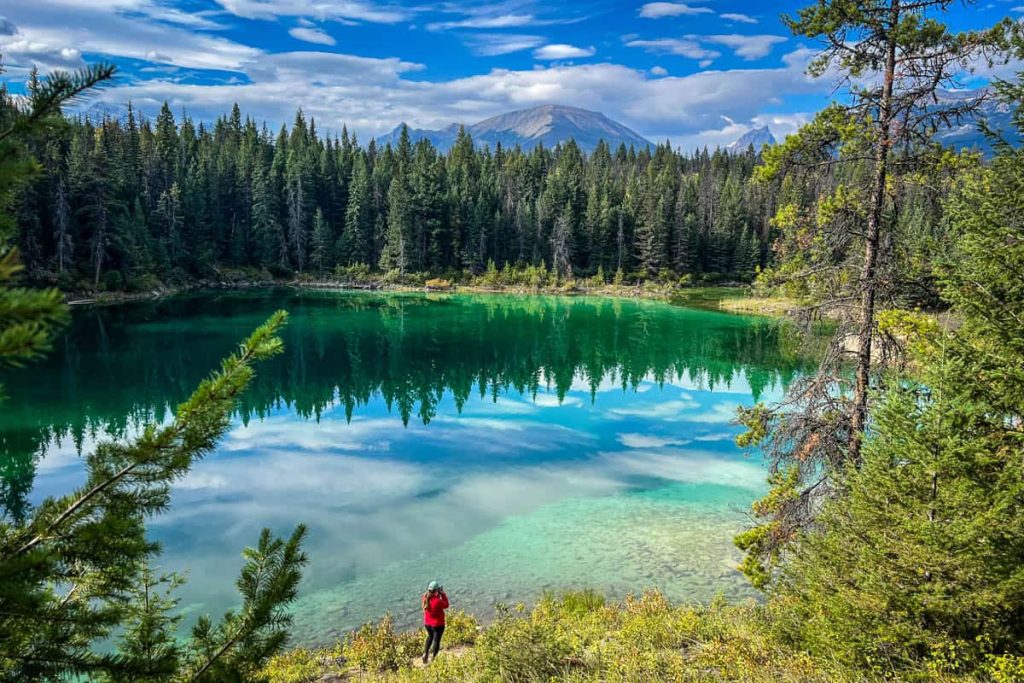
This beautiful loop leads you past five brilliantly colored lakes with tranquil picnic spots and benches along the way.
Sulphur Skyline Trail (8 km return, challenging)
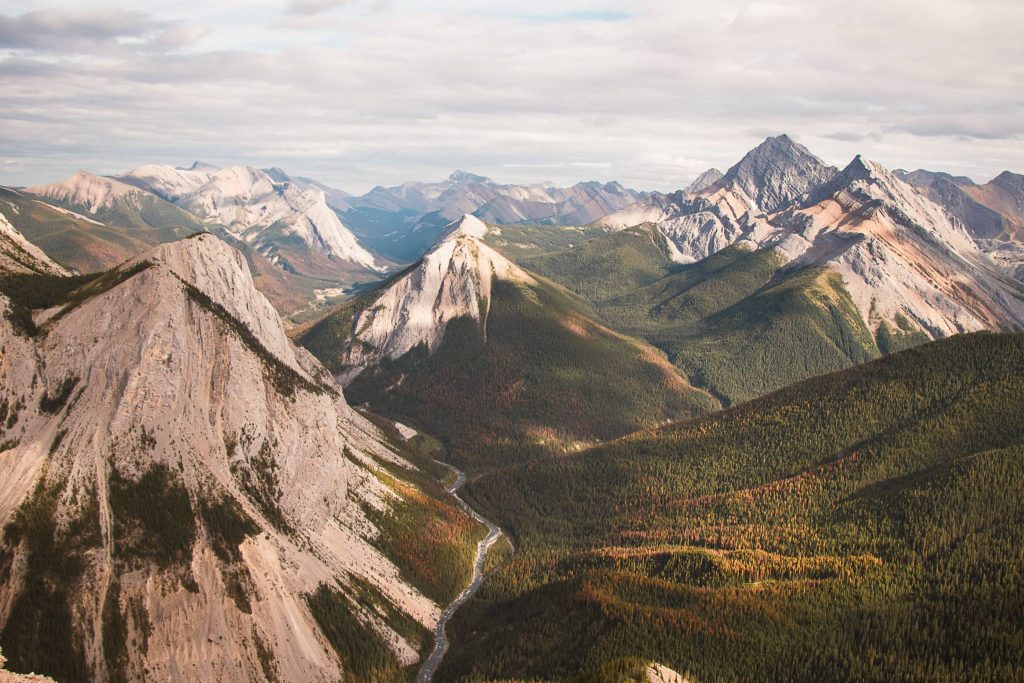

One of Jasper’s most rewarding hikes, offering panoramic views of the Fiddle Valley and surrounding peaks. The perfect pairing with a soak in Miette Hot Springs after your effort.
Maligne Canyon (up to 7 km return, easy to moderate)
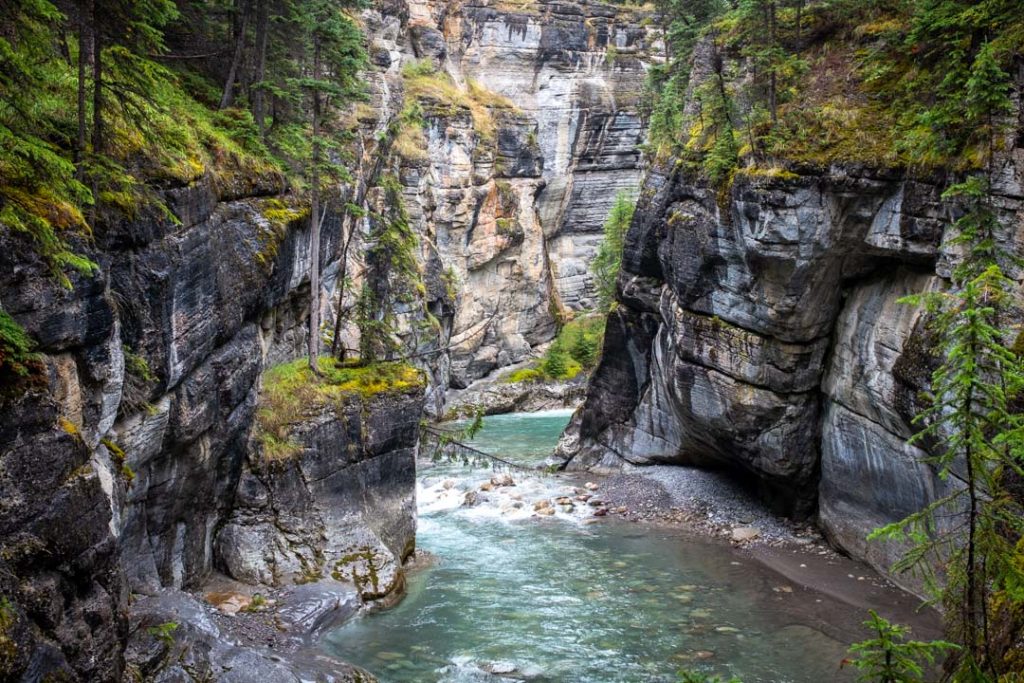
Explore Jasper’s deepest canyon, with waterfalls crashing through narrow limestone walls. Cross up to six bridges as you follow the canyon’s rim.
Cavell Meadows Trail (8.5 km return, moderate)
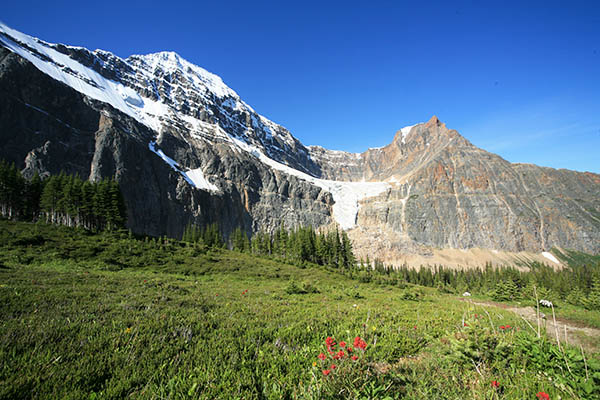
Get up close to Mount Edith Cavell, admire wildflowers in summer, and spot Angel Glacier clinging to the cliffs above.
Wildlife in Jasper National Park Alberta
Jasper is one of Canada’s top national parks for wildlife spotting. Animals roam freely, so drive cautiously and keep your camera ready.
- Black bears and grizzlies — Most active in spring and summer, often seen along roadways or in meadows.
- Elk — Common around the townsite, especially in fall during the rutting season.
- Mountain goats and bighorn sheep — Look for them on cliffs and along highways.
- Coyotes, wolves, and foxes — More elusive, but possible to see at dawn or dusk.
- Birdlife — Jasper is home to bald eagles, ospreys, gray jays, and owls.
Important: Always stay at least 30 meters from large animals and 100 meters from bears. Never feed or approach wildlife.
When to Visit Jasper National Park Alberta
Spring (April–June)
Waterfalls and rivers are at their peak.
Good time for wildlife viewing, especially newborns.
Trails at higher elevations may still have snow.
Summer (July–August)
Prime time for hiking, paddling, and camping.
Warm days, long daylight hours.
The busiest season — book early!
Fall (September–October)
Fewer visitors and cooler weather.
Stunning fall colors and elk mating calls.
Great time for photography.
Winter (November–March)
Excellent for skiing at Marmot Basin, snowshoeing, and ice climbing.
Jasper becomes a magical snowy wonderland.
Potential for northern lights viewing on clear nights.
Practical Tips for Visiting Jasper National Park Alberta
- Park Pass — All visitors need a Parks Canada pass. You can purchase one online, at park gates, or in town.
- Accommodation — Jasper offers hotels, lodges, cabins, and campgrounds. Book early, especially in summer.
- Drive Carefully — Wildlife often cross roads, especially at dawn/dusk.
- Limited Connectivity — There’s little cell service in remote parts of the park. Download maps and guides in advance.
- Be Responsible — Follow Leave No Trace principles. Jasper’s pristine beauty depends on it.
How to Get to Jasper National Park Alberta
By Car:
From Edmonton: 365 km (~4 hours) via Highway 16
From Calgary: 412 km (~5 hours) via the Icefields Parkway
From Vancouver: 800 km (~9 hours)
By Train:
VIA Rail’s The Canadian service offers a scenic rail journey through the Rockies to Jasper.
By Bus:
Shuttle services connect Jasper with Banff, Calgary, and Edmonton.
Final Thoughts:
Jasper National Park Alberta delivers the ultimate Rocky Mountain adventure — without the crowds of some other Canadian parks. Its vast landscapes, thrilling hikes, incredible wildlife, and star-filled skies create experiences that stay with you forever.
Whether you come for a few days or an extended road trip through the Rockies, Jasper promises endless beauty and discovery.
Tip: Pair your Jasper trip with the Icefields Parkway drive to Banff for one of the world’s most scenic journeys.
